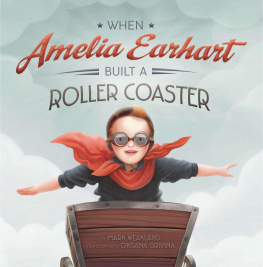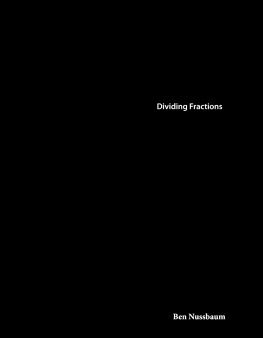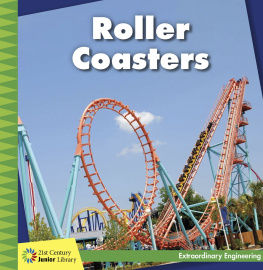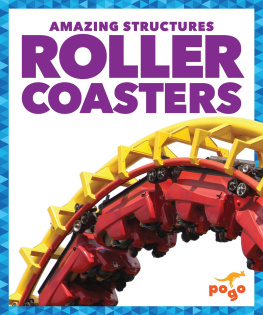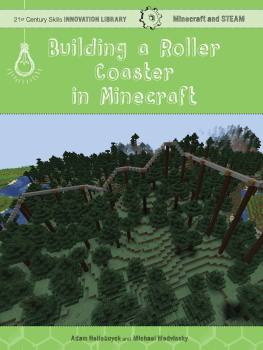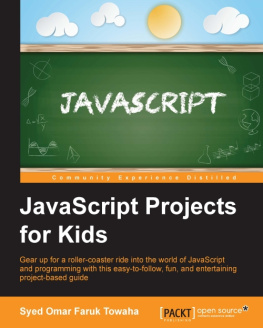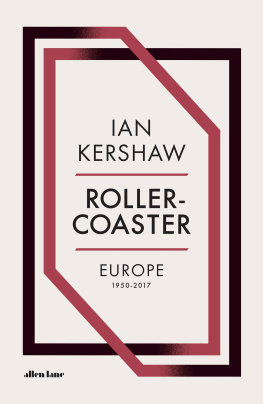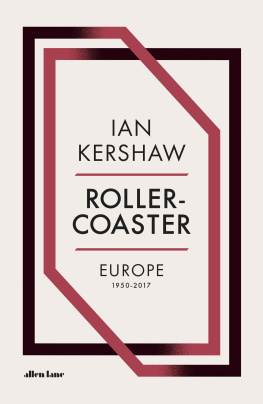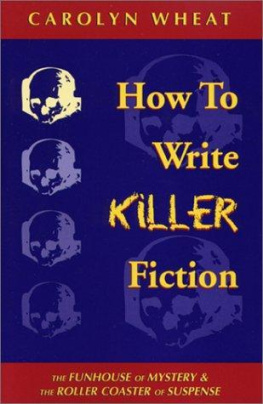Coasters 101
An Engineers Guide to Roller Coaster Design
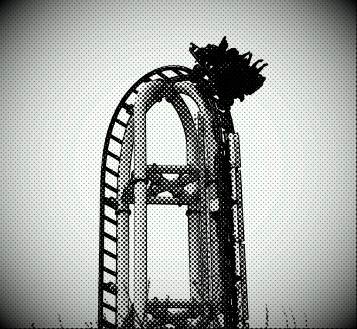
Nick Weisenberger
Third Edition Smashwords Edition
Contents
Copyright Information
Third Edition First published November2013
Smashwords Edition
Copyright 2014 by Nick Weisenberger
All rights reserved. No part of this book may bereproduced or transmitted in any form or by any means, electronicor mechanical, including photocopying, recording, or by anyinformation storage and retrieval system, without permission inwriting by the author. The only exception is by a reviewer, who mayquote short excerpts in a review.
This ebook is licensed for your personalenjoyment only. This ebook may not be re-sold or given away toother people. If you would like to share this book with anotherperson, please purchase an additional copy for each recipient. Ifyoure reading this book and did not purchase it, or it was notpurchased for your use only, then please return to your favoriteebook retailer and purchase your own copy. Thank you for respectingthe hard work of this author.
Cover layout and design by John Stevenson
3D renderings by Patrick McGarvey
Photographs by Nick Weisenberger
No affiliation with, or endorsed by anyoneassociated, or in any way connected with any amusement park,company, or product listed herein.
This book is available in print at most onlineretailers.
Disclaimer
Although the author has attempted toexhaustively research all sources to ensure the accuracy andcompleteness of information on the subject matter, the authorassumes no responsibility for errors, inaccuracies, omissions, orany other inconsistencies herein. We recognize that some words,model names and designations, for example, mentioned herein are theproperty of the trademark owner. We use them for identificationpurposes only. This is not an official publication.
The purpose of this text is to complement andsupplement other texts and resources. You are urged to read all theavailable literature, learn as much as you can about the field ofengineering, and adapt the information to your particular needs.There may be mistakes within this manual. The information containedherein is intended to be of general interest to you and is providedas is, and it does not address the circumstances of anyparticular individual or entity. Nothing herein constitutesprofessional advice, nor does it constitute a comprehensive orcomplete statement of the issues discussed thereto. Therefore, thetext should only be used as a general and introductory guide andnot as the sole source for roller coaster engineering.
Side effects of reading this book may includedizziness, nausea, or the sudden urge to visit a theme park.
Coasters 101 is dedicated to all aspiring rollercoaster designers. Never give up on your dreams!

Chapter 1: Introduction
The Three Dimensional Puzzle
Have you ever wondered what it takes to design aroller coaster? Its not as easy as computer games make it out tobe! A roller coaster, while simple in terms of the sheer thrill itgives to those who ride it, is a complex three-dimensional puzzleconsisting of thousands of individual components.
There is no apprenticeship or degreespecifically targeted at engineering a roller coaster. Whether itswood or steel construction, the job is an interdisciplinary mix ofstructural, mechanical, civil, and electrical engineering. No tworoller coasters are designed exactly the same way. Each project hasits own unique set of circumstances and challenges. A perfect blendof engineering and art, roller coaster designers spend countlesshours creating and tweaking ride paths to push the envelope ofexhilaration all while maintaining the highest standards forsafety.
The academic definition of the term 101 meansthe introductory material in a course of study. Coincidentally,the term 101 is as common at theme parks as it is on a campus. Ifan attraction shuts down for whatever reason, a string of messageswill fly back and forth between the operations and maintenancestaff. This used to be accomplished via hand-held radios orwalkie-talkies. In order to avoid a guest over hearing the detailsof a broken down ride it was common practice to use the code number101 rather than announce The ride is down to anyone withinearshot. Nowadays, with texting and smart phones replacing radios,its no longer as critical but is still a convenientcoincidence.
Coasters 101: An Engineers Guide to RollerCoaster Design examines the numerous diverse aspects of rollercoaster creation including some of the mathematical formulas andengineering concepts that go into designing a multimillion dollarthrill ride. This introductory text is meant to give a betterunderstanding of the thought process that goes into designing aroller coaster, from concept to creation. Please keep in mind thatsome equations are generally simplified. Although a basicunderstanding of physics terms such as velocity, acceleration, andG-force is required (and such terms are defined in the glossarylocated at the end of this book) you wont need an engineering oradvanced physics degree to understand the content of Coasters 101.Now hang on tight and enjoy the ride!
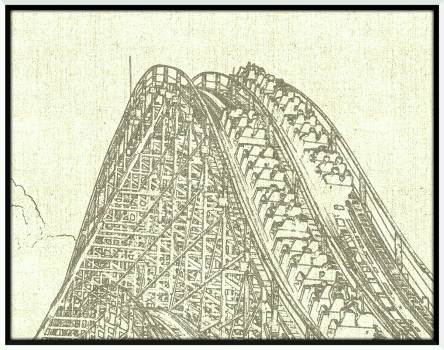
Brief History of the Roller Coaster
The ancestor of the modern roller coaster isthought to have originated in Russia in the 15th century as slidesconstructed of wood and covered in ice. These Russian Mountainswere built to keep the local residents entertained during the longRussian winters. Over time, the ices slides became more and moresophisticated and grew to be as tall as seventy feet. Sand was usedat the end of the ramps to slow the sleds down. Originally, theseearly thrill rides could only be experienced during the winter. Atthe start of the 1800s, wheels were added to the sleds enablingyear round rides. Interestingly enough, these roller coasters inRussian are called American Mountains.
The next major advancement in the evolution ofthe roller coaster came in the early 1800s in France, when cartswith wheels were first used on grooved tracks preventing the cartsfrom flying off. Next, primitive cable systems were introduced topull the cars to the top of the hills. The Aerial Walk (PromenadesAeriennes) was the first full circuit roller coaster.
Scenic railways appeared in America in the 1870sas a method for railroad companies to increase their business. Evenmore improvements were made such as automatically being lifted tothe top of the tallest hill, wheels on the underside to lock thecars to the track, and two side-by-side rides that raced oneanother.
The term roller coaster is thought to haveoriginated from American thrill rides in the 1880s that usedhundreds of rollers mounted to slides or ramps on which a sled ortoboggan rode. Passengers coasted along on rollers, hence the nameroller coaster. While providing a name to these creations, thisparticular ride had little else to do with the physical developmentof the roller coaster.
In 1912, the first coaster with upstop wheelswas introduced by John Miller. This design held the coaster trainon the track and allowed for more speed, steeper hills, and lessdrag. The first use of lap bar restraints was in 1907 on theDrop-the-Dips at Coney Island in Brooklyn, New York. In 1925, theRevere Beach Cyclone became the first roller coaster to break theone hundred foot tall barrier.




